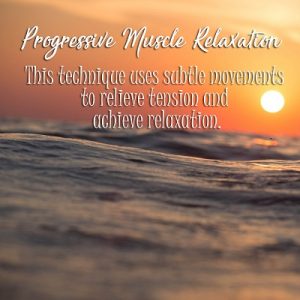 The muscle relaxation technique for stress doesn’t require much exertion for it to be effective, that’s probably why it has become so popular. One of the common methods is progressive muscle relaxation, which uses subtle movements to relieve tension and achieve relaxation.
The muscle relaxation technique for stress doesn’t require much exertion for it to be effective, that’s probably why it has become so popular. One of the common methods is progressive muscle relaxation, which uses subtle movements to relieve tension and achieve relaxation.
The method is based on the idea that it’s easier to relax muscles by making smaller movements to relieve tension. It’s the type of tension in the muscles that causes body aches and headaches that you have probably had for days or at least so long you haven’t even realized they were there.
By tightening each muscle group and then releasing, you start to feel more relaxed and less stressed. It’s all about exaggerating each conscious movement and release – this makes you more aware of your muscles and to when you’re holding tension. This allows you the opportunity to complete the muscle relaxation technique in a bid to reduce your stress levels before it has a chance to get out of control.
How to Do Progressive Muscle Relaxation
The first step is finding a room to practice this – it should be relatively quiet, dimly lit, and you should be able to sit comfortably or lie down.
- Close your eyes and start breathing deeply through your nose. Hold your breath for just a few seconds and then release it through your lips. Do this several times and imagine that your body is becoming heavy and warm. Release tension that you become aware of.
- Continue to breathe slowly and clench both of your fists, tightening your biceps and holding the tension for a few seconds. Now release the tension and let it ebb away. Your focus should be on the changing sensations in your muscles. As you allow the tension to flow from your arms, hands, and fingers keep your hands open to shake off the remnants.
You should continue this pattern through each of the major muscle groups in the body.
- Facial – Start by raising your brows and furrowing your forehead. Then squeeze your eyes closed as tightly as possible, and then clench your teeth. Finally, squeeze your face all together (like a toddler would do after eating lemon for the first time).
- Neck – Pull your chin toward your chest slowly and then turn your head to the right before turning it to the right. You should keep your shoulders relaxed, but straight, while you practice this technique.
- Chest – Puff your chest out and take a deep breath (now hold it for five seconds) before slowly releasing it.
- Shoulders – Shrug your shoulders, pushing them back for a few seconds, relax and then pull them forward.
- Upper Back – You will want to sit in a chair for this one and allow your back to rest against the chair and then push your body so that your back arches. If this is uncomfortable or causes you pain then you should skip to the next one.
- Abdomen – Pull your stomach in and then push it out, tensing it as though you were expecting a blow.
- Legs – Lift your leg and tense your calf and thigh muscles (prepare for cramping) and bring your toes toward you. Do each leg in turn first and then raise both of them before finally pointing your toes out as far as possible.
- Feet – Point your toes (all while keeping your legs down) and then pull them toward you before finally digging into the floor. You should breathe deeply while you practice this exercise.
As you work through each group of muscles, you will feel warmth enveloping your body as you finally relax. After you complete the exercise, take some down time and allow your muscles to rest. Just enjoy the relaxation before you rush back into action. You’re transitioning from total relaxation so you don’t want to undo your hard work by jumping up and diving back into your day.
While the total amount of time required to complete this exercise will vary from person to person it really doesn’t take much time. It’s important to give yourself enough time, though, to pause for 30 seconds between muscle groups, and to enjoy the peace once you have finished. You may choose to do this in total silence, but relaxing music is an effective way to block out any background noise, which may break your focus.






